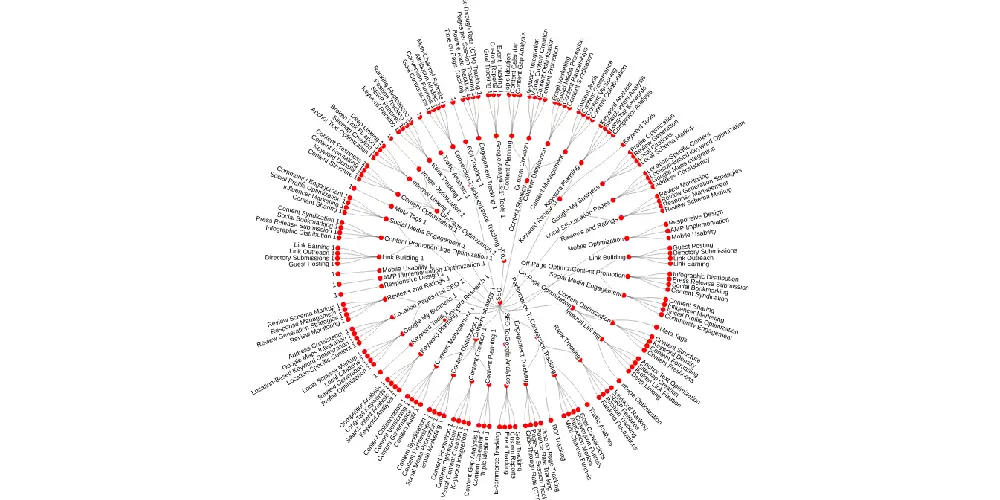Last Updated on October 17, 2025
Most brands focus on publishing new content — but rarely on cleaning up what already exists.
Over time, your website accumulates outdated blog posts, thin pages, duplicate content, and expired campaigns. These not only dilute SEO performance but also waste Google’s crawl budget and confuse your content strategy.
Content pruning is the systematic process of identifying and removing (or merging) underperforming or redundant pages to make your site lean, fast, and search-optimized.
A comprehensive Ahrefs study revealed that over 96.55% of web pages receive no organic traffic from Google. This highlights a critical truth — more content doesn’t always mean more traffic.
Strategic pruning helps reclaim that lost equity, streamline internal linking, and focus ranking power on content that actually matters.
In this guide, we’ll explore how to identify low-value content, execute pruning safely, refresh existing pages, and measure impact — supported by data and examples from top SEO brands.
1. What Is Content Pruning and How It Impacts SEO
Content pruning is an SEO maintenance strategy where you delete, merge, or update pages that aren’t adding value.
Think of it as “digital decluttering” — you’re removing noise so that search engines and users can focus on your best-performing assets.
Why it matters:
- Enhances crawl efficiency by reducing wasted crawl budget
- Consolidates link equity to strong URLs
- Improves topical authority and internal linking
- Increases average engagement metrics (CTR, dwell time)
Google itself encourages maintaining a “focus on quality over quantity” in its documentation.
2. How to Identify Content That Needs Pruning
Before pruning, it’s essential to identify which content is underperforming. Use analytics and SEO tools to audit the entire content inventory.
Step 1: Crawl your site
Use tools like:
- Use an online SEO crawler to find out total number of pages
- Google Search Console (GSC) to check indexed pages
Step 2: Review key metrics
Evaluate each page based on:
- Traffic: Pages with <10 organic sessions in 90 days
- Backlinks: Zero or very low referring domains
- Engagement: High bounce rate, low average time on page
- Conversion rate: Non-converting landing pages
Step 3: Mark for action
Classify pages as:
- Keep: High-performing or strategic
- Update: Outdated but valuable
- Merge: Duplicate or overlapping pages
- Remove: Irrelevant, low-quality, or orphaned content
3. Step-by-Step Process of Content Pruning
Once you’ve identified low-value pages, follow a structured process to prune without damaging your SEO foundation.
Step 1: Audit and categorize
Create a spreadsheet with page URLs, performance data, and decisions (keep, update, delete, merge). This ensures traceability and prevents accidental loss of valuable pages.
Step 2: Merge overlapping pages
If multiple pages target similar keywords, combine them into a single comprehensive piece.
Example: Merge “How to Optimize Internal Links” and “Internal Linking Best Practices” into one authoritative guide.
Step 3: Redirect deleted pages
Implement 301 redirects from deleted URLs to the most relevant alternative to preserve link equity and prevent 404s.
Step 4: Update internal links
Find and fix broken links pointing to removed URLs.
This step maintains link flow and user experience.
Step 5: Request reindexing
After changes, use Google Search Console → Inspect URL → Request Indexing to ensure Google re-crawls updated pages quickly.
4. Balancing Pruning With Content Refresh
Pruning doesn’t always mean deleting. Often, updating outdated content yields better ROI than removing it.
Update strategies:
- Replace outdated statistics and examples
- Improve headings, meta tags, and keyword density
- Add visuals, FAQs, or expert quotes
- Optimize for new search intent (People Also Ask queries)
💡 HubSpot’s historical optimization project refreshed old articles and saw a 106% boost in organic traffic.
When to refresh vs. delete
| Scenario | Action |
|---|---|
| Page has backlinks but outdated info | Update |
| Page has duplicate content | Merge |
| Page has zero traffic & no backlinks | Delete |
| Page is targeting obsolete keywords | Refresh |
Refreshing content often provides a quicker win since Google already trusts the page’s URL and indexing history.
5. Measuring the Impact of Content Pruning
After executing pruning, track SEO impact over 4–8 weeks.
Monitor key KPIs:
- Organic traffic trends (GSC, GA4)
- Index coverage report
- Crawl stats and average crawl duration
- Ranking improvement for focus keywords
- User engagement (CTR, bounce rate, session duration)
A Moz case study found that a B2B site saw a 32% increase in organic sessions after structured pruning and consolidation.
6. Best Practices for Sustainable SEO Maintenance
To prevent content bloat from recurring, integrate pruning into your long-term SEO maintenance plan.
Best practices:
- Conduct content audits every 6–12 months
- Maintain a changelog for all URL removals
- Regularly update cornerstone content
- Use canonical tags to manage duplicate intent pages
- Keep a balance: 70% creation, 30% optimization
Conclusion
Content pruning is not about deleting your hard work — it’s about elevating your site’s overall quality and authority.
By trimming underperforming pages, consolidating content, and refreshing valuable assets, you help Google understand your expertise and users find value faster.
When implemented strategically, pruning turns clutter into clarity — and wasted pages into organic growth.
- Top AI Marketing Tools in 2025 - December 2, 2025
- Best SEO Content Optimization Tools - November 13, 2025
- People Also Search For (PASF): The Complete 2025 Guide to Smarter SEO Optimization - November 11, 2025




